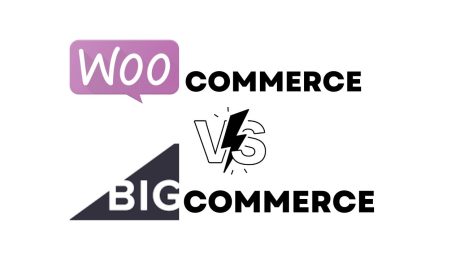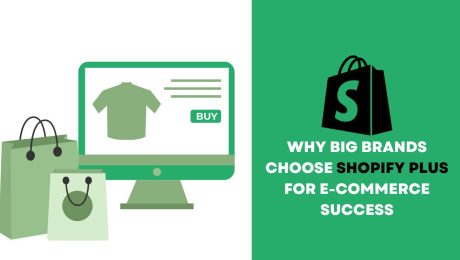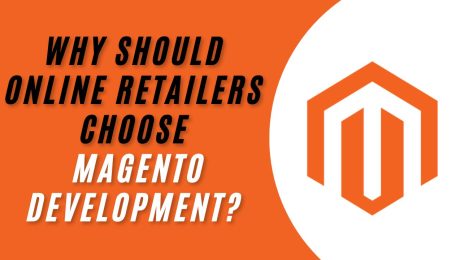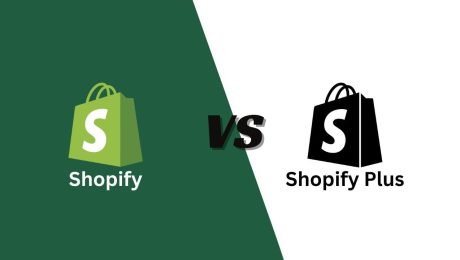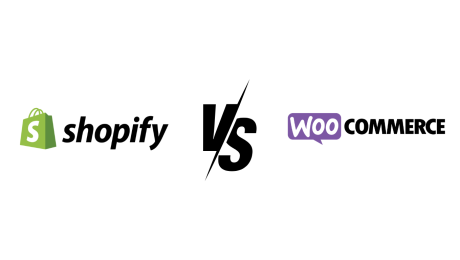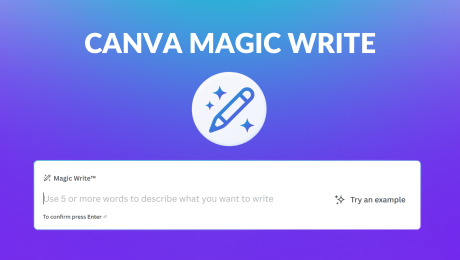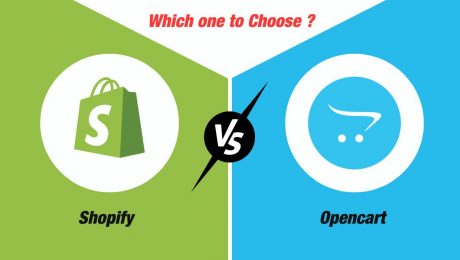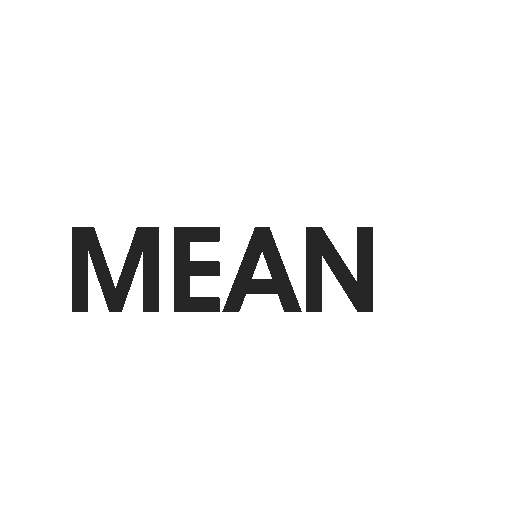WooCommerce vs BigCommerce: Which One Wins?
Imagine investing time and money into an online store. Now, imagine it struggles with slow load times, limited payment options, or expensive upgrades. This is the reality for many businesses in Pakistan. They face challenges when choosing between WooCommerce and BigCommerce. These issues can slow down your growth. They can cost you sales and frustrate your customers.
With so many e-commerce platforms available, finding the right one can feel overwhelming. Both WooCommerce and BigCommerce offer unique benefits. But which one is best for your business needs in Pakistan? This blog will help you make a smart choice. We will compare both platforms based on pricing, features, customization, and scalability.
By the end, you’ll have a clear understanding. You’ll know whether WooCommerce or BigCommerce is the better choice for your business.
What Are WooCommerce and BigCommerce?
What is WooCommerce?
WooCommerce is a free plugin for WordPress. It converts your website into an online store. While the plugin itself is free, you’ll still need to invest in hosting, a domain name, security, and additional plugins to improve its functionality.
Key Points:
- Open-source platform
- Extremely customizable with a wide range of themes and plugins.
- Perfect for businesses that want complete control over their store.
What is BigCommerce?
BigCommerce is a fully hosted e-commerce platform. It provides a complete solution to build and run an online store. You won’t need to worry about hosting or security. BigCommerce also includes tools for SEO, marketing, and payment processing.
Key Points:
- All-in-one platform with built-in features
- User-friendly and ideal for beginners
- Great for businesses looking for scalability and minimal maintenance
WooCommerce vs BigCommerce: A Head-to-Head Comparison
1. Ease of Use: Which One is Simpler?
- WooCommerce requires more technical knowledge. This is especially true for hosting, security, and updates. If you’re comfortable working with WordPress, this won’t be a problem.
- BigCommerce is a fully managed platform. It handles everything, including hosting and security. This makes it easier for beginners or those who prefer a simple, hassle-free experience.
Winner: BigCommerce is easier for beginners, while WooCommerce offers more control.
2. Customization: How Much Control Do You Have?
- WooCommerce offers full customization. You can access the code, install custom themes, and use a vast library of plugins.
- BigCommerce, while customizable, is more limited in terms of flexibility. The platform offers built-in features, but you can’t change the core code.
Winner: WooCommerce gives you more flexibility and control.
3. Pricing: Which is More Budget-Friendly?
- WooCommerce is free to use, but you’ll need to pay for hosting, themes, and plugins. The costs can add up, depending on the plugins you choose.
- BigCommerce has a monthly subscription fee, starting at $29/month. This fee includes hosting and security, so you don’t need to worry about separate costs.
Feature | WooCommerce | BigCommerce |
Base Cost | Free | Starts at $29/month |
Hosting | Paid separately | Included |
Security | Paid separately | Included |
Plugins/Themes | Paid separately | Limited free themes |
Winner: WooCommerce may be cheaper initially, but BigCommerce offers an all-in-one, predictable cost.
4. Scalability: Which One Grows with Your Business?
- WooCommerce allows you to scale, but it requires manual optimization. As your business grows, upgrading your hosting may become necessary. You might also need to fine-tune your website for better performance.
- BigCommerce automatically scales as your business grows. It provides better performance even when handling a high volume of traffic.
WooCommerce vs BigCommerce: Which One Wins
Winner: BigCommerce offers automatic scaling for business growth.
5. Payment Gateways: Which Supports Pakistani Payments?
- WooCommerce works well with local payment gateways like JazzCash and EasyPaisa. This is a big plus for businesses in Pakistan.
- BigCommerce also offers various payment options. However, some may not be readily available or easy to integrate in Pakistan.
Winner: WooCommerce has better support for local payment gateways.
Pros and Cons: WooCommerce vs. BigCommerce
Pros of WooCommerce
✅ Free plugin (with optional paid features)
✅ Complete customization and flexibility
✅ Strong local payment gateway support (ideal for Pakistani businesses)
Cons of WooCommerce
❌ Requires manual setup and regular maintenance
❌ Performance depends on hosting quality
Pros of BigCommerce
✅ Fully hosted solution with everything included
✅ Great for scaling without manual intervention
✅ Built-in SEO tools and security features
Cons of BigCommerce
❌ Monthly subscription fees
❌ Less flexibility and customization
Which One Is Better for Pakistani Businesses?
For businesses in Pakistan, choosing the right platform depends on your specific needs:
- Choose WooCommerce if you need complete control and flexibility. It works great with local payment methods like JazzCash and EasyPaisa.
- Choose BigCommerce if you want an all-in-one solution with minimal maintenance. It’s a good choice for businesses planning to scale quickly with fewer technical requirements.
Both platforms have their strengths. However, WooCommerce is better for businesses that want control over every aspect of their store. BigCommerce, however, is ideal if you’re looking for a scalable and hassle-free platform.
Conclusion: Making the Right Choice
Selecting the best e-commerce platform for your business is important. Both WooCommerce and BigCommerce offer excellent features. In the end, the best option depends on your unique needs:
- WooCommerce is ideal if you want customization and have the technical skills to maintain it.
- BigCommerce is ideal for businesses that want growth and ease without technical challenges.
To decide, think about your business goals and how you want to manage your store in the long run.
Looking for expert help with your e-commerce store? Mean3 is here to guide you in selecting the best platform for your business. Contact us today!
- Published in Ecommerce, Shopify, Technology
Why Big Brands Choose Shopify Plus for E-commerce Success
E-commerce in Pakistan is growing fast. More businesses are moving online to keep up with demand. According to a report by Statista, the e-commerce market in Pakistan is expected to reach $7.6 billion by 2025. This growth highlights the need for a strong and reliable platform.
Many big brands choose Shopify Plus for their online stores. But why is it the preferred option?
In this blog, we will explore its benefits, pricing, and how it differs from the standard Shopify plan. If you are considering an upgrade, we will also guide you on how to upgrade to Shopify Plus and how to contact Shopify Plus support for help.
What is Shopify Plus?
Shopify Plus is an enterprise-level e-commerce platform. It is designed for high-volume businesses. The platform offers advanced features, better customization, and dedicated support. This makes it ideal for large brands and growing stores.
Unlike the standard Shopify plan, Shopify Plus can handle massive sales volumes without slowing down. It provides automation tools, enhanced security, and API integrations to streamline operations.
Shopify Plus Benefits
1. Scalability for Growing Businesses
Shopify Plus grows with your business. Whether you experience seasonal spikes or steady growth, the platform handles high traffic with ease.
2. Customization and Flexibility
Shopify Plus offers more control over your store’s design and functionality. With advanced Shopify scripts and APIs, brands can create personalized shopping experiences.
3. Dedicated Account Manager and Priority Support
Shopify Plus users get a dedicated account manager. This helps with store setup and optimization. If you need help, you can contact Shopify Plus support anytime for priority assistance.
4. Automation and Efficiency
Shopify Plus includes automation tools like Shopify Flow and Launchpad. These tools help businesses manage tasks such as order processing, promotions, and inventory updates.
5. Multi-Channel Selling
With Shopify Plus, you can sell on multiple channels. These include online stores, social media, and marketplaces. This helps businesses reach a wider audience and increase sales.
Shopify Plus Pricing
Shopify Plus pricing is different from standard Shopify plans. Instead of a fixed monthly fee, it starts at $2,000 per month. The cost varies based on business needs. While the price may seem high, the features and scalability make it a worthwhile investment for large businesses.
Difference Between Shopify and Shopify Plus
Feature | Shopify | Shopify Plus |
Monthly Cost | $29 – $299 | Starts at $2,000 |
Customization | Limited | Advanced customization |
Support | Standard | Dedicated account manager |
Automation | Basic | Shopify Flow & Launchpad |
Scalability | Good | Best for high-volume sales |
Multi-Store Management | Not available | Yes |
How to Upgrade to Shopify Plus
Upgrading to Shopify Plus is simple:
- Evaluate Your Needs – Decide if your business requires advanced features and scalability.
- Contact Shopify Plus Support – Reach out to Shopify’s sales team to discuss pricing and features.
- Migration and Setup – Shopify’s team will help migrate your store and set up advanced tools.
- Optimize and Launch – Once live, use automation and customization features to improve performance.
Final Words
Shopify Plus is a strong platform for businesses looking to scale. It offers advanced features, dedicated support, and automation tools. This makes it a great choice for brands aiming for long-term growth.
Ready to scale your e-commerce business? Upgrade to Shopify Plus with Mean3 today. Contact us to learn more and get started!
- Published in Ecommerce, Shopify, Technology
Digital Marketing Trends You Can’t Afford to Ignore in 2025
Digital marketing will keep changing quickly in 2025. Research shows that businesses are investing more in digital marketing, but many struggle with a shortage of skilled talent. This gap highlights the need for companies to stay updated on the latest marketing trends. In this blog, we will explore key trends in digital marketing. We will also provide practical tips for businesses to use in their strategies.
What Are Digital Marketing Trends?
Digital marketing trends are changes in the ways businesses connect with customers online. These trends shape how marketers reach their audience using different strategies, tools, and methods. As the digital world changes, businesses must stay updated to remain competitive.
A well-planned digital marketing strategy ensures your business reaches the right audience and grows. Let’s look at the most important digital marketing trends for 2025.
Top Digital Marketing Trends for 2025
1. AI-Powered Personalization
AI is changing how businesses interact with customers. In 2025, AI will help brands create personalized experiences. AI can study customer behavior to recommend products, content, and services that fit each person’s needs.
For example, e-commerce websites recommend products based on past purchases or browsing history. This makes shopping more relevant for each customer, leading to better engagement and higher sales.
2. Interactive Content
Interactive content encourages users to engage directly with what they see. Quizzes, polls, and interactive infographics are all examples of this type of content. In 2025, more businesses will use interactive content to improve engagement.
When users participate in content, they are more likely to remember the brand. This also helps businesses build stronger relationships with their customers. For example, a fashion brand might offer a quiz to help customers discover their style. Based on the answers, the brand would recommend products that match their preferences.
3. Augmented Reality (AR) in Marketing
Augmented Reality (AR) is transforming the way customers experience products online. By blending real and digital worlds, AR allows businesses to offer interactive experiences. This could mean virtual try-ons, 3D product views, or even AR-based tours.
In industries like retail, real estate, or education, AR will become a key tool. For businesses in Pakistan, adopting AR can help them stand out from competitors. It also offers customers a unique shopping experience.
4. Short-Form Video Content
Short videos are taking over digital marketing. Short-form videos have become popular thanks to TikTok and Instagram Reels. They are a great way to grab attention. In 2025, businesses will focus even more on this type of content.
These videos are quick and easy to share, which makes them ideal for social media. Brands can use short-form videos to show behind-the-scenes looks, tutorials, or product demos. This helps build trust and makes brands more relatable to customers.
How to Adapt Your Digital Marketing Strategy to These Trends
Here are a few ways you can adapt your strategy to stay on top of these trends in 2025:
1. Use AI for Personalized Marketing
Invest in AI tools that help you analyze customer data. Use this information to send targeted offers, personalized product recommendations, and relevant content. By doing so, you will keep your customers engaged and improve conversion rates.
2. Create Interactive and Engaging Content
Instead of static blog posts or ads, create content that your audience can interact with. This could include polls, quizzes, or interactive product demos. Engaging your audience in this way can boost brand loyalty. It also provides valuable insights into what your customers enjoy.
3. Start Using Augmented Reality (AR)
If your business can benefit from AR, start experimenting with it. AR can improve the customer experience by letting them try products virtually or view them in 3D. This can boost interest in your brand.
4. Focus on Short, Impactful Videos
Start producing short, engaging videos. Keep them brief, informative, and fun. You don’t need a big production budget to make effective short videos. You can share these on Instagram, TikTok, and Facebook to increase brand visibility and attract more customers.
How Businesses in Pakistan Can Benefit from These Trends
Digital marketing trends are global, but businesses in Pakistan can take advantage of them. Here’s how:
1. Mobile-First Approach
In Pakistan, many people access the internet through mobile devices. This makes a mobile-first approach essential. Make sure your website is easy to navigate on mobile phones. You should also consider mobile advertising and app promotions to reach more customers.
2. Cultural Relevance
When creating digital marketing content, make sure it resonates with Pakistani culture. Humorous and relatable content is more likely to get shared. Consider using local references and trends to connect with your audience.
3. E-Commerce Growth in Pakistan
The e-commerce industry in Pakistan is growing quickly. As more people shop online, businesses must ensure their online stores are optimized. Fast checkout and digital payment methods make shopping simpler and more convenient for customers.
Conclusion
Digital marketing will continue to change in 2025. Businesses need to adapt to new trends like AI personalization, interactive content, AR, and short-form videos to stay competitive. Updating your strategy with these trends helps attract more customers, strengthen brand loyalty, and boost sales.
Now that you know the top digital marketing trends for 2025, it’s time to take action. Start by using AI to personalize your content or creating engaging short videos. Don’t wait—staying ahead of these trends will help your business grow and stand out in a crowded market.
Want to upgrade your digital marketing strategy for 2025? Start applying these trends now to grow your business. Need help? Contact Mean3 for expert guidance!.
- Published in Ecommerce, Technology
How Digital Marketing Can Accelerate Your Business Growth
A storefront alone is not enough to succeed in today’s world. Millions of people in Pakistan are online daily. Digital marketing helps businesses connect with them. Whether you own a small shop or a large company, online marketing can boost sales and build your brand.
What Is Digital Marketing?
Digital marketing helps you promote products or services through online platforms. It includes social media, search engines, emails, and websites. Unlike traditional marketing, it helps businesses reach a larger audience quickly. With the right approach, companies can connect with customers, build brand awareness, and boost sales. From targeted ads to SEO, digital marketing keeps businesses competitive. In today’s digital world, an online presence is essential, not optional.
Why Digital Marketing Matters for Business Growth
Traditional ads like billboards and newspapers have limitations. Digital marketing provides a cost-effective way to reach more people. Here’s why it’s essential:
- Wider Reach: You can connect with customers beyond your local area.
- Cost-Effective: Online ads fit all budgets, making them useful for small businesses.
- Better Decisions: Digital tools track customer behavior, helping businesses improve their strategies.
In Pakistan, internet use is growing fast. Digital marketing allows businesses to reach potential customers instantly.
How Can Digital Marketing Help Your Business Compete?
Competition is tough, but online marketing gives businesses an edge. Here’s how:
- Targeted Ads: Reach the right audience based on age, location, and interests.
- Social Media Engagement: Platforms like Facebook, Instagram, and LinkedIn help businesses engage with customers.
Search Engine Ranking: Ranking higher on Google builds trust and attracts more visitors.
For example, a clothing brand in Pakistan boosted online sales by 60% in one year using SEO and social media ads.
Key Digital Marketing Strategies for Businesses in Pakistan
To grow your business with digital marketing, focus on these key strategies:
1. Search Engine Optimization (SEO)
SEO helps websites rank higher in search results. Pakistani businesses can improve SEO by optimizing keywords, speeding up their website, and building backlinks.
2. Social Media Marketing
Millions of Pakistanis use Facebook, Instagram, and TikTok. Social media helps businesses build brand awareness and engage with customers.
3. Content Marketing
Blog posts, videos, and infographics attract potential buyers and build trust.
4. Email Marketing
Personalized emails help businesses stay connected with customers and boost sales.
5. Paid Advertising (PPC)
Google Ads and Facebook Ads target specific customers and bring quick results.
How Digital Marketing Helps Businesses Grow Online
A strong online presence leads to business growth. Here’s how digital marketing helps:
- 24/7 Visibility: Customers can find your business anytime, leading to more sales.
- Customer Insights: Digital tools reveal customer preferences, allowing businesses to refine their strategies.
- Personalized Experience: Custom messages and special offers improve customer engagement and increase sales.
Common Challenges in Digital Marketing & How to Solve Them
Many Pakistani businesses hesitate to invest in digital marketing due to these reasons:
- Limited Budget: Start with SEO and content marketing before moving to paid ads.
- High Competition: Stand out by creating a unique brand identity and engaging content.
- Lack of Expertise: Hiring professionals can improve results.
Conclusion
Digital marketing helps businesses grow by increasing their reach and sales. It also builds strong customer relationships. In Pakistan, businesses can stay competitive by using SEO, social media, content marketing, and paid ads.
To achieve your digital marketing goals, work with a trusted agency like Mean3 for expert guidance.
- Published in Ecommerce, Technology
Why Should Online Retailers Choose Magento Development?
The platform you choose for your store is important. Magento is a great choice. It’s flexible, powerful, and can grow with your business. Whether you’re just starting or expanding, Magento helps you build a unique store. A good platform affects everything from how fast your site loads to how customers feel while shopping.
What is Magento Development?
Magento development means building eCommerce websites with the Magento platform. Magento is an open-source system. It gives you full control over your store’s design and features. Whether you’re a small business or a big one, Magento fits your needs.
Why Magento is Best for eCommerce
Magento is great for eCommerce. It can grow with your business. As you add more products or customers, Magento handles it well. The platform is open-source. This means you can fully customize your store. Magento also helps with SEO, so your store can rank higher in search engines. This leads to more customers.
Key Benefits of Magento for Retailers
Magento has many benefits. It is SEO-friendly, helping your store appear in search results. You can also customize your store easily. Magento works well with third-party services like payment and shipping providers. This makes running your store easier. Plus, Magento has strong security features to protect your business and customers.
Scalability: Growing With Your Business
Magento grows with your business. Whether you’re just starting or running a large store, Magento can handle it. As you add more products or get more customers, Magento keeps your store running smoothly. It lets you add new features as your business changes.
Security Features to Protect Your Business and Customers
Magento takes security seriously. It has built-in tools to protect your store from threats. It uses secure payment systems and offers regular updates. Magento also helps prevent fraud and data breaches. You can be sure that your customers’ information is safe, which builds trust.
Building a Strong Online Store with Magento
Magento helps you build a custom store. You can change the design, layout, and features. Whether you need custom product pages or different checkout options, Magento offers the flexibility to create it. The platform also supports multiple stores and currencies. This lets you grow your business globally.
Mobile Optimization: A Must for eCommerce Success
More people shop on mobile devices. Magento makes sure your store works well on phones and tablets. It has a responsive design that adapts to all screen sizes. A mobile-friendly store improves user experience and can lead to more sales.
Magento Extensions and Community Support
Magento offers many extensions. These tools add extra features like payment options and marketing tools. You can install them easily. Magento also has a big community. Developers and users around the world share helpful advice and resources to help your business grow.
Why Choose Magento for Your Online Business?
Magento is perfect for online stores. It’s scalable, secure, and customizable. It helps improve SEO and mobile optimization. You can also integrate third-party services. Magento has everything you need to grow your business.
Conclusion:
Magento is a powerful platform for eCommerce stores. It offers scalability, security, and customization. If you’re ready to grow your online store, Mean3 can help. Our team of experts can build you a secure, high-performing store with Magento. Contact us today to get started.
- Published in Ecommerce, Technology
Shopify vs Shopify Plus: A Complete Guide for E-commerce Growth
E-commerce owners in Pakistan face many decisions when starting an online store. One major decision is choosing the right platform. In this guide, we compare Shopify and Shopify Plus. We explain their main differences. Our goal is to help you decide which option suits your business needs.
What Is Shopify?
Shopify is a cloud-based platform that lets businesses create an online store. It has an easy-to-use interface and simple design tools. Shopify comes with built-in features for payments and shipping. This platform is popular among small to medium businesses because it is simple to manage and requires little technical skill.
Key Points About Shopify:
- Ease of Use: You do not need to have technical skills to run your store.
- Wide Range of Apps: Shopify gives you access to many apps that add extra functions.
- Standard Support: Help is available via email, live chat, and community forums.
- Pricing: Shopify offers various plans. The pricing fits small budgets and can grow with your business.
Shopify is a good starting point if you want to sell online without spending much on technical development or support.
What Is Shopify Plus?
Shopify Plus is a version of Shopify for larger businesses or those with more complex needs. It includes the main features of Shopify and adds extra support and functions. Shopify Plus is made for businesses with high transaction volumes or those that want more control over their online store.
Key Points About Shopify Plus:
- Dedicated Support: Shopify Plus gives you a dedicated support team. This team helps solve problems quickly.
- Advanced Customization: You get more control over the checkout process and site design.
- Higher Transaction Limits: This plan handles a larger number of transactions.
- Pricing Structure: Shopify Plus costs more. The price reflects the extra features and help it provides.
If your business needs more than the basic Shopify plan, Shopify Plus gives you the tools and support to handle high sales volumes and complex operations.
Main Differences Between Shopify and Shopify Plus
When comparing Shopify plus vs Shopify, think about the differences in features, support, and cost.
Features and Customization
- Shopify: You get a wide range of themes and apps. These let you set up a store quickly. The customization options work well for most small to medium businesses.
- Shopify Plus: You have more control over the checkout process and site design. This extra control is useful if you need specific functions or a unique shopping experience.
Support and Resources
- Shopify: The support is standard. You can get help by email, live chat, and a community forum.
- Shopify Plus: You receive priority support and a dedicated account manager. This help is useful when you face issues during busy times.
Pricing
- Shopify: This platform uses fixed monthly pricing. There are several plans that suit different business sizes. The cost is predictable and works well for startups.
- Shopify Plus: The cost is set based on your business needs. Although the fee is higher, you get extra features and better support. This plan works best for high-volume stores.
Automation and Integration
- Shopify: It supports many apps. These apps help automate marketing, sales, and customer service. However, automation is limited to what the apps can do.
- Shopify Plus: It includes more built-in tools for automation. This helps you reduce manual work. You also get better integration with external systems.
Shopify vs Shopify Plus Features
Let’s compare Shopify vs Shopify plus features in detail.
User Interface and Design
- Shopify: The platform comes with many ready-to-use themes. These themes are simple to set up. You don’t have to write code.
- Shopify Plus: You can use the same themes as Shopify. In addition, you have extra customization options. You can change elements at the checkout. You can also use custom scripts to change the shopping process.
Payment and Transaction Handling
- Shopify: You have access to various payment gateways. This makes it easy to sell to customers in different regions.
- Shopify Plus: Besides standard payment gateways, it supports high-volume payment processing. You can also use custom payment solutions. This helps if you process many transactions.
Security and Reliability
Both Shopify and Shopify Plus are known for strong security. They offer SSL certification and meet PCI compliance. Regular updates keep your store safe. This builds trust with your customers.
Scalability
- Shopify: This platform works well for businesses that grow steadily. It can handle more orders as your business expands.
- Shopify Plus: It is designed for businesses that grow quickly. It can manage high traffic and large sales volumes without issues.
Shopify vs Shopify Plus Pricing
Pricing is a key factor when comparing Shopify vs Shopify plus pricing.
Shopify Pricing
Shopify offers several plans. These plans start with basic features at a lower monthly rate. They are designed to be affordable for new businesses. You also have access to the essential tools you need to run your store.
- Basic Plan: Good for small businesses with fewer sales.
- Standard Plans: These include more features. They support businesses that are growing.
- Extra Apps and Themes: You can add extra features at an extra cost.
Shopify Plus Pricing
Shopify Plus does not have a fixed price for everyone. The cost depends on the size of your business and its needs. The monthly fee is higher than Shopify’s standard plans. However, you get better support and advanced features. For many businesses in Pakistan, this extra cost is worthwhile if you plan to grow fast or need custom functions.
Shopify vs Shopify Plus in Pakistan
E-commerce in Pakistan has its challenges and chances for growth. When you compare Shopify vs Shopify plus in Pakistan, think about these factors:
Local Payment Options
Both platforms support global payment gateways. However, local businesses may also need local payment systems. Shopify allows you to work with different local payment solutions. This flexibility is important for Pakistani entrepreneurs.
Market Growth
Pakistan’s e-commerce market is growing steadily. Shopify makes it simple to start selling online. For many small to medium businesses, this is enough. If you run a larger business or expect fast growth, Shopify Plus can offer the extra support you need.
Technical Support
Business owners in Pakistan sometimes face unique challenges. For many, Shopify’s standard support works fine. But if your business has complex needs, Shopify Plus offers dedicated support. This can help fix problems quickly during busy periods.
Customization Needs
Many Pakistani businesses want to show local tastes in their online store. Shopify provides the tools to do this. If you need changes beyond the basics, Shopify Plus gives you more control over design and function.
Making the Right Choice for Your Business
When you decide between Shopify and Shopify Plus, consider your business size, growth plans, and support needs.
Here are some key points to consider:
- Start Small: If your business is new or grows slowly, the basic Shopify plans can meet your needs without high costs.
- Plan for Growth: If you expect many transactions or need custom integrations, Shopify Plus may be a better choice.
- Support Needs: Think about how much personal support you need. Shopify Plus offers dedicated help that can keep your store running smoothly during busy times.
Each business is unique. The best plan is to review your current needs and your future goals. If you are unsure, start with Shopify. You can always upgrade to Shopify Plus later as your business grows.
Conclusion
Both Shopify and Shopify Plus provide strong platforms for online stores. Shopify is a good choice for many small to medium businesses in Pakistan. It is easy to use and affordable. Shopify Plus, however, offers extra tools and dedicated support for businesses with higher demands.
Your choice depends on your current needs and your plans for the future. Consider your sales volume, required features, and support needs when making a decision. For more advice on choosing the right tools for your online store, you may want to check out Mean3.
- Published in Shopify, Technology
Comparing Shopify and WooCommerce: Make the Right Choice for Your Ecommerce Journey
Ready to Set Up Your E-commerce Store? Choose Wisely!
E-commerce has boomed recently, opening doors for businesses worldwide. For e-commerce setup, Shopify and WooCommerce stand out. They each have distinct advantages, making the platform choice crucial for anyone entering online retail. In this blog, we’ll dive into the comparison of Shopify and WooCommerce, and explore how Shopify’s new personalized merchant experience plays a role in this dynamic landscape.
Shopify: The E-commerce Powerhouse
Shopify has established itself as a powerhouse in the e-commerce realm. Known for its user-friendly interface and extensive range of built-in tools, it’s a go-to choice for both newcomers and experienced retailers. One of Shopify’s standout features is its simplicity – you don’t need to be a tech expert to set up and manage your store effectively.
Shopify has recently taken a step forward by offering a personalized merchant experience through Re-platformer landing pages. This initiative is targeted at those who are considering migrating their existing stores to Shopify. The tailored in-admin migration support ensures a smooth transition, minimizing disruptions to your business operations. Furthermore, merchants can access additional tools such as migration-focused setup guides and sales guidance. This comprehensive support can significantly ease the often daunting process of migrating your store.
Pros of selling on shopify:
- User-friendly interface, perfect for beginners.
- Hosted solution, eliminating the need for separate hosting.
- Variety of professional templates and themes.
- Robust app store for adding functionalities.
- 24/7 customer support.
Cons of Shopify store:
- Monthly subscription costs.
- Limited customization compared to open-source solutions.
- Transaction charges for using payment channels from third parties.
- Advanced features might require coding or app integration.
WooCommerce: The WordPress Integration
WooCommerce, on the other hand, is an open-source ecommerce plug-in designed to integrate seamlessly with WordPress websites. This makes it an ideal choice for those who are already familiar with WordPress or want more control over the customization of their online store.
One of Woo Commerce’s biggest advantages is its flexibility. You have complete access over the store’s design, functionality, and hosting. With access to thousands of WordPress themes and plug-in, you can tailor your store to your exact specifications.
Pros:
- Open-source and free to use (though you might incur other costs like hosting and domain).
- Complete customization control.
- Extensive range of plug-in and extensions.
- Integrated blogging capabilities through WordPress.
- No transaction fees for using third-party payment gateways.
Cons:
- Requires separate hosting and domain setup.
- More technical expertise might be needed for setup and maintenance.
- You’re responsible for security and updates.
- Some plug-in can be costly.
Making the Choice
Choosing between Shopify and WooCommerce depends on your specific needs and priorities. If you’re seeking a hassle-free solution with a focus on user-friendliness and seamless migration, Shopify’s personalized merchant experience is a strong selling point. On the other hand, if you prioritize customization, flexibility, and are comfortable with more technical aspects, WooCommerce might be the better fit.
Both Shopify and WooCommerce offer exceptional tools to help you establish and grow your online store. With Shopify’s recent efforts to provide targeted migration support and tools, it’s becoming an even more attractive option for those looking to make the switch.
10 features Shopify has better than WooCommerce: Why merchants prefer Shopify
In the dynamic world of e-commerce, selecting the right platform to power your online store is a decision that can greatly influence your success. Shopify and WooCommerce are two prominent contenders, each offering a range of features tailored to various needs. Let’s delve into 10 things Shopify can do better than WooCommerce, shedding light on why merchants often lean towards Shopify for their e-commerce ventures.
1. Simplicity and User-Friendly Interface: Shopify is renowned for its intuitive interface that requires minimal technical knowledge to set up and manage a store. Its streamlined design and straightforward setup process make it an ideal choice for entrepreneurs who want to dive into the world of e-commerce without a steep learning curve.
2. Hosted Solution: Unlike WooCommerce, which requires separate hosting and domain setup, Shopify provides a fully hosted solution. This means Shopify takes care of the technical aspects, including server maintenance and security updates, allowing merchants to focus more on their business.
3. Extensive Range of Professional Templates: Shopify offers a wide selection of professionally designed templates that cater to various industries and styles. These templates provide a solid foundation for your store’s design, allowing you to create a visually appealing and engaging online shopping experience.
4. Integrated Payment Gateways: Shopify comes with built-in support for various payment gateways, simplifying the payment process for customers. Merchants don’t need to worry about third-party integrations to accept payments, making it convenient for both sides of the transaction.
5. Robust App Store: Shopify’s app store boasts an extensive range of apps and integrations that can enhance your store’s functionality. From marketing tools to inventory management and beyond, these apps allow you to customize your store’s features without extensive coding.
6. 24/7 Customer Support: Shopify provides 24/7 customer support via various channels, ensuring that merchants receive timely assistance whenever they encounter issues or have questions.
7. Mobile Responsiveness: Shopify’s templates are designed to be mobile-responsive out of the box. This is crucial in the age of mobile shopping, ensuring that your store provides a seamless experience across devices.
8. Security and Updates: Shopify takes care of security and updates, relieving merchants of the burden of managing these aspects. This saves valuable time and resources.
9. Scalability: Shopify is well-equipped to handle the growth of your business. As your store expands, Shopify’s infrastructure can accommodate increased traffic and orders without compromising performance.
10. Personalized Merchant Experience: Shopify’s recent initiative to provide a personalized merchant experience through Re-platformer landing pages offers tailored migration support and additional tools for a smoother transition. This can be a significant advantage for merchants looking to migrate their stores.
Why Merchants Prefer Shopify to WooCommerce
Merchants often prefer Shopify due to its user-friendliness, hassle-free setup, and strong support. Entrepreneurs prioritize products and customers over technical complexities, and Shopify’s professional templates and robust assistance cater to these needs. Personalized migration support adds to its appeal. In short, Shopify’s simplicity, comprehensive support, and feature-rich environment make it the go-to choice for reliable e-commerce.
Ready to Take the Next Step? Choose Your Ecommerce Powerhouse!
As you navigate the exciting world of e-commerce, the decision between Shopify and WooCommerce is pivotal to your online store’s success. Both platforms respond to various needs and preferences while offering distinctive features and advantages. Whether you’re drawn to Shopify’s user-friendly interface and comprehensive support or WooCommerce’s customization and control, the choice ultimately hinges on what aligns best with your business vision.
If you’re intrigued by Shopify’s simplicity, powerful features, and personalized migration support, why not take advantage of their tailored merchant experience? Sign up for Shopify today with Mean3
Are you considering a Shopify store and in need of professional guidance? Look no further. Contact Mean3, your official Shopify experts.
Don’t believe us? Learn about us through ‘For shopify store you will need an official shopify expert like Mean3.
- Published in Shopify, Technology
Reveal the Magic Canva Magic – Making Design Easy and Fun
Canva is a place that helps you create eye-catching designs and graphics easily, even if you’re not a
professional designer. It offers templates and simple tools to make things like posters, social media
images, presentations, and more. Canva makes design accessible and fun for everyone!
Canva has been a huge help in the field of making things seem attractive. Canva now has an amazing
a feature called Canva Magic.
What’s Canva Magic?
It’s a design magic wand! Imagine if making things look awesome was as easy as saying “abracadabra.”
Well, that’s kind of what Canva Magic does. It’s a special thing in Canva that helps you make your
designs look according to your liking. It’s like a superpower for your creativity!
Features Canva Magic Brings
- Brainstorm and generate new ideas: This will assist you in coming up with ideas and topics
- Short text generation: With a few prompts, you may create any brief content, such as social media headlines, profile profiles, product descriptions, and more.
- Long form Text Generation: Create high-quality long form material for blogs, sales emails, tales, and more in a flash. You will notice a speedier writing process.
- Continue writing: Allow Magic Write to continue creating the rest of the material while you search for words and ideas in the middle of a sentence. Highlight your existing content, add a few prompts, and Magic Compose will compose the next sentences for you.
- Create outlines: Al’s writing assistant, Magic Write, can help you easily develop outlines for articles, blogs, and essays, as well as better structure any content.
- Make lists: Al’s writing tool allows you to create lists ranging from pros and drawbacks to marketing plan lists, allowing you to focus on writing better and faster.
- Headline Generator: Uses the terms you select to make catchy headlines and taglines for your blog, article, essay, tale, and more.
- Paragraph Generator: This generates full paragraphs in your desired tone or voice for blogs, articles, short stories, and other types of content.
- Rewrite Tool: A tool that allows you to quickly and easily rewrite any content.
- Magic Shortcut: A keyboard shortcut for any type using our custom/Magic Shortcut.
- Paraphrasing Tool: An Al-powered paraphrasing tool that rephrases and rewrites any content, so you can edit and turn any content into a unique paragraph
- Summary Generator: This is an Al-enabled text summary tool that extracts relevant key words from any piece of content, giving you a shorter and more understandable version.
How to use the CanvaMagic: Everyone Can Be a Design Pro
Canva Magic doesn’t take away your creativity – it enhances it. It’s like having a buddy that helps you
make your ideas look even better. Follow these steps to create a perfect design:
Create a design or open an existing design.
- Select the ‘Canva Assistant’ button in the bottom right corner of the screen. You can also type to open the Canva Assistant shortcut. In your Canva document, select the + icon.
- Enter or describe the desired text. For example, “3 tips for a healthier lifestyle.” The more precise details you provide, the better result will generate. Make sure to add relevant keywords in your sentences.
- Press Enter when you are satisfied. And just like magic, your text will appear.
- Finally, correct and edit the text according to your needs. When you’re ready, finalize and share your design.
What are the limitations of Magic Write?
Be careful when generating text using Magic Write.
- Use updated information only until mid-2021. This means that some of the generated text may contain outdated information so make sure you do your research.
- Instructions come only from text you type or use in your document. The more context and direction you provide the better results you will get.
- Incorrect or non-unique text may be generated.
- The input limit is maximum 1500 words and the output limit is approximately 2000 words. This means that the generated text may be reduced in the middle of sentences.
Conclusion
With Canva Magic, making things look great is like having a magic wand. Boring stuff like editing and
fixing becomes easy, and you can focus on making things look fantastic. It’s like Canva’s way of saying,
“Hey, you can make awesome stuff, and I’m here to help!” So, go ahead, try out the magic, and see how
your designs can be totally enchanting!
In the fast-paced digital world Mean3 is excited to explore the world of Canva magic. Mean3’s core
strength lies in delivering visually engaging content to its audience. Canva Magic aligns perfectly with
this objective by offering instant image enhancement, making even the simplest images pop with
vibrant appeal. This enhancement tool saves time and effort, ensuring that Mean3’s visuals consistently
resonate with their audience.
By incorporating Canva Magic, Mean3 can achieve a more consistent brand identity, engage its audience
with captivating visuals, and ultimately solidify its position as a design-savvy industry player.
- Published in Ecommerce, Technology
Shopify’s 2023 Plan Pricing
When Shopify was established in 2006, it brought an exciting concept to the market: providing merchants of all sizes with the top e-commerce tools available to make commerce simpler and more accessible for everyone.
Though much has been altered in past years, some important aspects remain the same. The cost to access superior e-commerce tools has remained roughly constant. With regards to better supporting the mission and merchants, Shopify has been an announcement to update of the pricing plans – Basic, Shopify, and Advanced.
Current Shopify users can rest easy for the next three months, as their prices will remain unchanged. However, newcomers to the platform are being welcomed with lower introductory rates of just $1 per month during their trial period! No matter your experience level or budget, you’ll be hard-pressed to find another eCommerce solution that gives you more value than Shopify.
Evolution and Innovation With Time:
Shopify is dedicated to making tomorrow more possible than we can imagine today. The objective is to allow entrepreneurs and businesses of all varieties to construct, create and excel in any environment around the globe. They build tools driven by a passion for creating a better future!
Shopify has always been dedicated to providing merchants with the most cutting-edge, reliable, and efficient tools on the market at an unbeatable price. The commitment requires Shopify to frequently update and upgrade the products so they can stay ahead of competitors – but no matter how much technology changes over time, the core mission remains unchanged.
Updated Pricing:
Basic: The basic plan was $29 per month. Now updated to $25 per month.
Shopify: Shopify plan was for $79. Now updated to $65 per month.
Advanced: Advanced plan was for $299. Now updated to $399 per month.

Wrapping up:
By making this change, Shopify can persist in tackling some of the most challenging issues in the business with those best suited to take them on. This modification also allows Mean3 to push boundaries and empower more individuals to pursue their entrepreneurial dreams at speed essential for everyone’s benefit. Together, let’s make commerce better!
Looking for Shopify Solutions?
- Published in Ecommerce, Technology
OpenCart vs Shopify – Which One to Choose?
Want to earn online? But you are still confused about which platform to choose from. As you know, OpenCart and Shopify are two of the most popular eCommerce platforms in today’s market. Let’s test and compare their key features to let you know which one works the best for you, whether you are looking for a simple online store or a more advanced one. First, We will have a little bit of insight into both platforms if you aren’t aware of them.
What is OpenCart ?
OpenCart is a popular e-commerce platform that offers many great features for online merchants. Some of the key advantages of OpenCart include its powerful store management system, a wide range of payment options, and customizable designs.
What is Shopify ?
Shopify is another popular e-commerce platform that allows businesses to set up and manage their online stores. Similar to OpenCart, Shopify also offers many useful features, such as an intuitive admin dashboard, multiple payment options, and a wide range of customizable themes.
OpenCart vs Shopify:Which One is Right for your Online Store?
Opencart vs Shopify which one is better? While both OpenCart and Shopify are powerful e-commerce tools, there are some key differences between these two platforms that you should consider when making your choice.
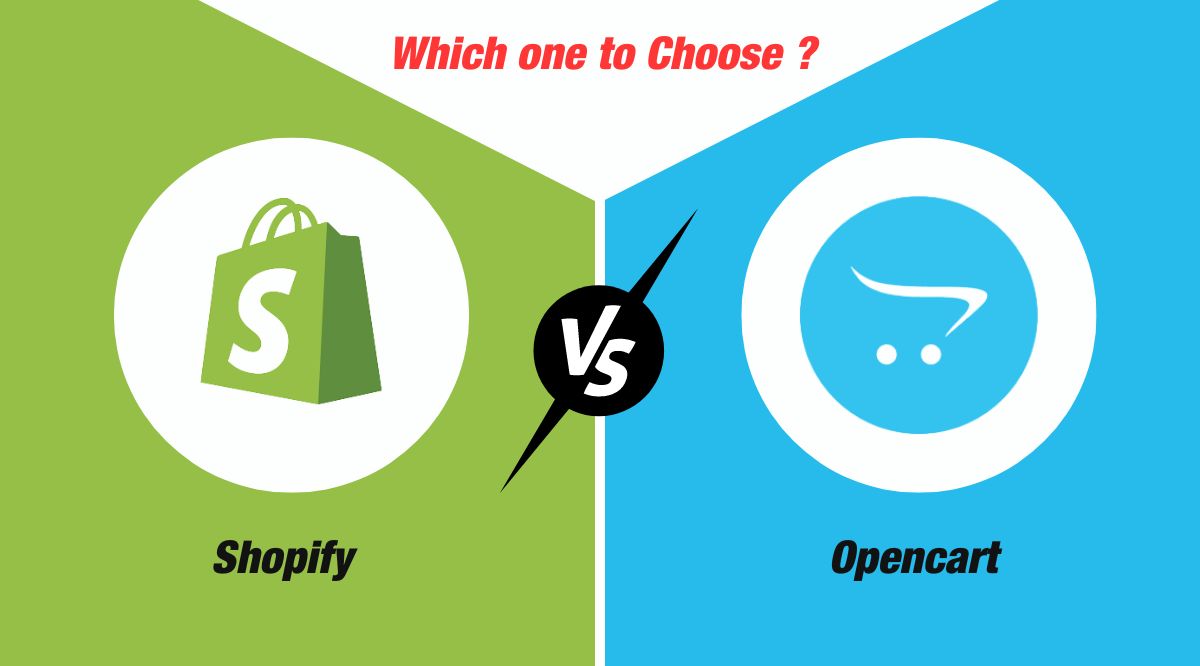
OpenCart vs Shopify: Pricing Comparison
Even though Opencart is free, you need to buy web hosting to use the software. Shared hosting plans are usually $5-$10/month and will suffice for new websites. However, if your site becomes popular, you’ll more than likely have to upgrade to e-commerce hosting with PCI (Payment card industry) compliance which costs around $30 a month.
Shopify, on the other hand, has a wide range of pricing plans. The cheapest plan costs just $19/month and includes unlimited products with no transaction fees. If you need more robust features such as shipping integrations or advanced reporting, you can upgrade to their higher tiers that start at $49/month.
OpenCart vs Shopify : Free Trial Policy
If you want to try Opencart for yourself, keep in mind that it is open-source software. This means that you’ll need to buy some hosting and install Opencart before getting started.
Shopify makes things a bit simpler by offering a 14-day free trial of their platform with no credit card needed upfront.
OpenCart vs Shopify: Setup and Management
OpenCart is a versatile e-commerce platform that is free and open source, making it an attractive option for businesses. With OpenCart, users can easily customize their storefronts to create a unique shopping experience for their customers. However, it can be challenging to manage large inventories on OpenCart, and the platform can be difficult to set up, especially for beginners. Additionally, OpenCart does not provide an integrated shipping solution or support for multiple currencies, which can make it challenging to manage your store’s global reach.
Looking for a simpler e-commerce platform with more built-in features? Shopify may be the right choice for you. As a hosted solution, Shopify takes care of all the technical details of running your store, including payment processing and security. With Shopify, you also get access to a wide range of customizable themes and apps that can help you build and manage your business more effectively. In addition to this, Shopify offers integrated shipping and inventory management features to help you streamline your operations, as well as support for multiple currencies.
OpenCart vs Shopify:Which Offers Best Support ?
OpenCart is an open-source platform, while Shopify is a subscription-based service. Both OpenCart and Shopify offer similar core functionality, such as the ability to create product catalogs, set up promotions and marketing tools, and manage customer data. However, OpenCart tends to be less user-friendly than Shopify and may require more technical knowledge to customize and maintain.
OpenCart vs Shopify:Which One is Best for SEO ?
When it comes to SEO, several factors can impact your rankings on search engines like Google. These include things like the quality of your website’s content, backlinking strategies, site speed, site architecture, and more.
To implement SEO best practices, the platform allows you to modify the metadata, product descriptions, categories, and individual web pages.
Since Shopify provides marketing tools such as email promotions, social media posts, and SEO settings, you can confidently focus on areas of your business that better match your strengths. And don’t worry if these areas aren’t your strong suit; the platform takes care of all the complicated technical details for you.
Shopify vs OpenCart: Final Verdict
Well, in the race of OpenCart VS Shopify, we have a clear winner—Shopify. OpenCart is a popular open-source e-commerce platform widely used by businesses all over the world. Shopify, on the other hand, has quickly gained popularity for its ease of use and robust functionality.
OpenCart is typically seen as more suited for small to medium-sized businesses, while Shopify offers enterprise-level features that make it a great option for large businesses. OpenCart is open-source, which means that it has a much larger community of developers and users and can be customized to meet the specific needs of your business. However, Shopify also allows for extensive customization options with its vast library of apps and themes.
Another key advantage of Shopify is its excellent customer support. OpenCart is also known for having great customer support, but Shopify’s help resources are much more robust and easily accessible. Whether you’re just getting started with OpenCart or are an experienced e-commerce veteran, Shopify offers the features and support you need to succeed in today’s competitive online marketplace. So if you’re looking for the best e-commerce platform for your business, look no further than Shopify!
Get your Shopify Store Developed by the Official Shopify Experts
- Published in Technology
- 1
- 2

